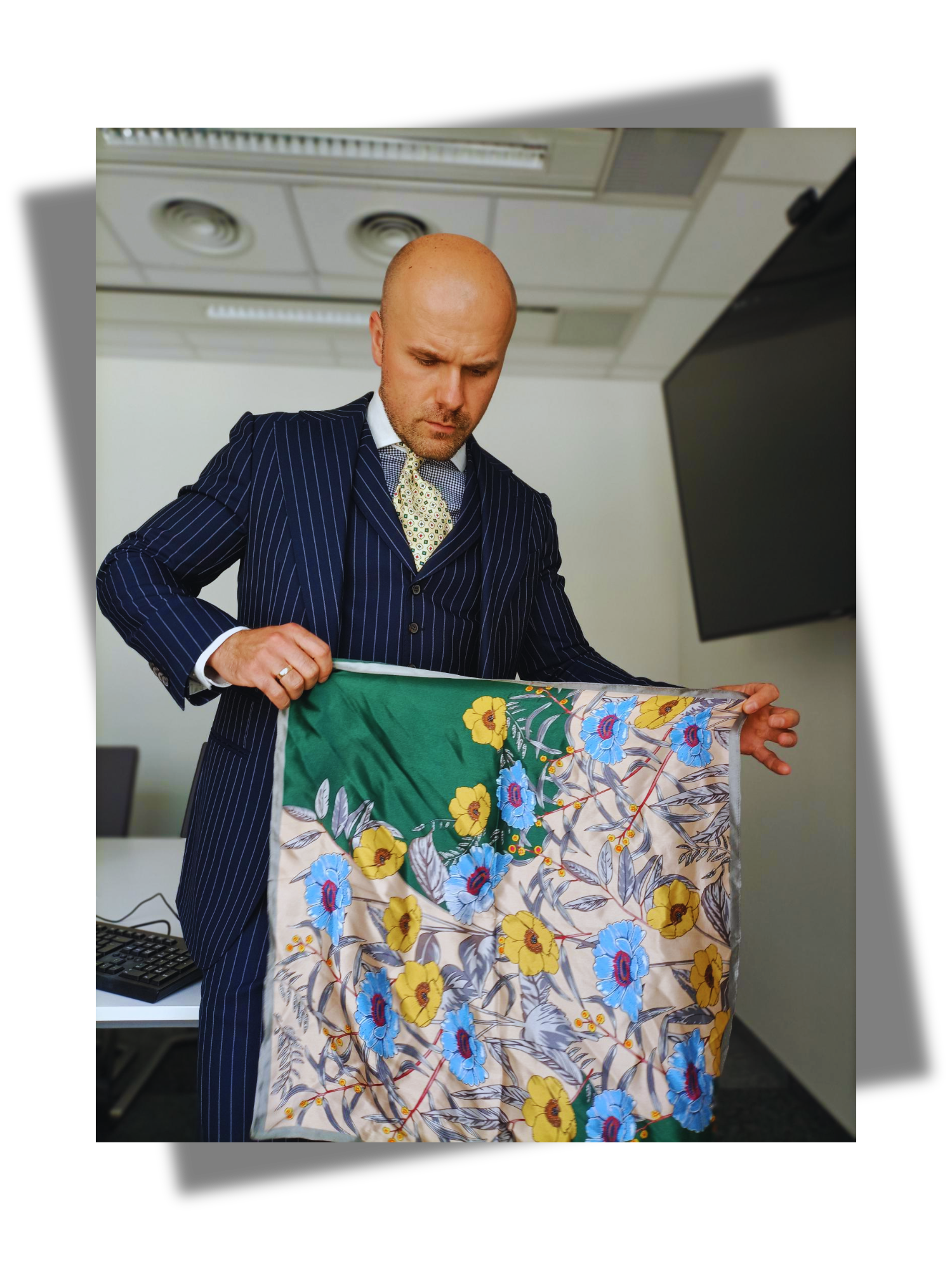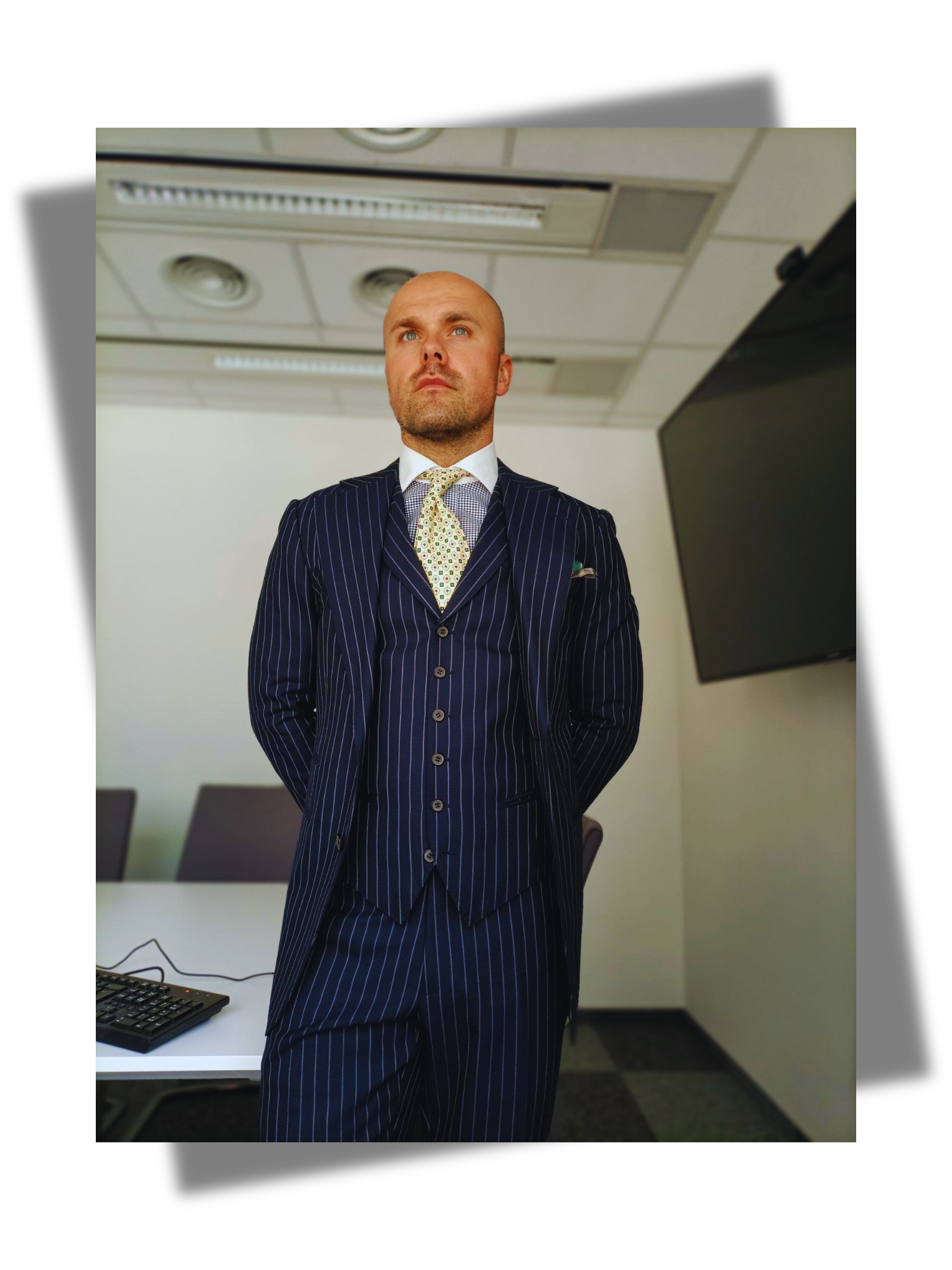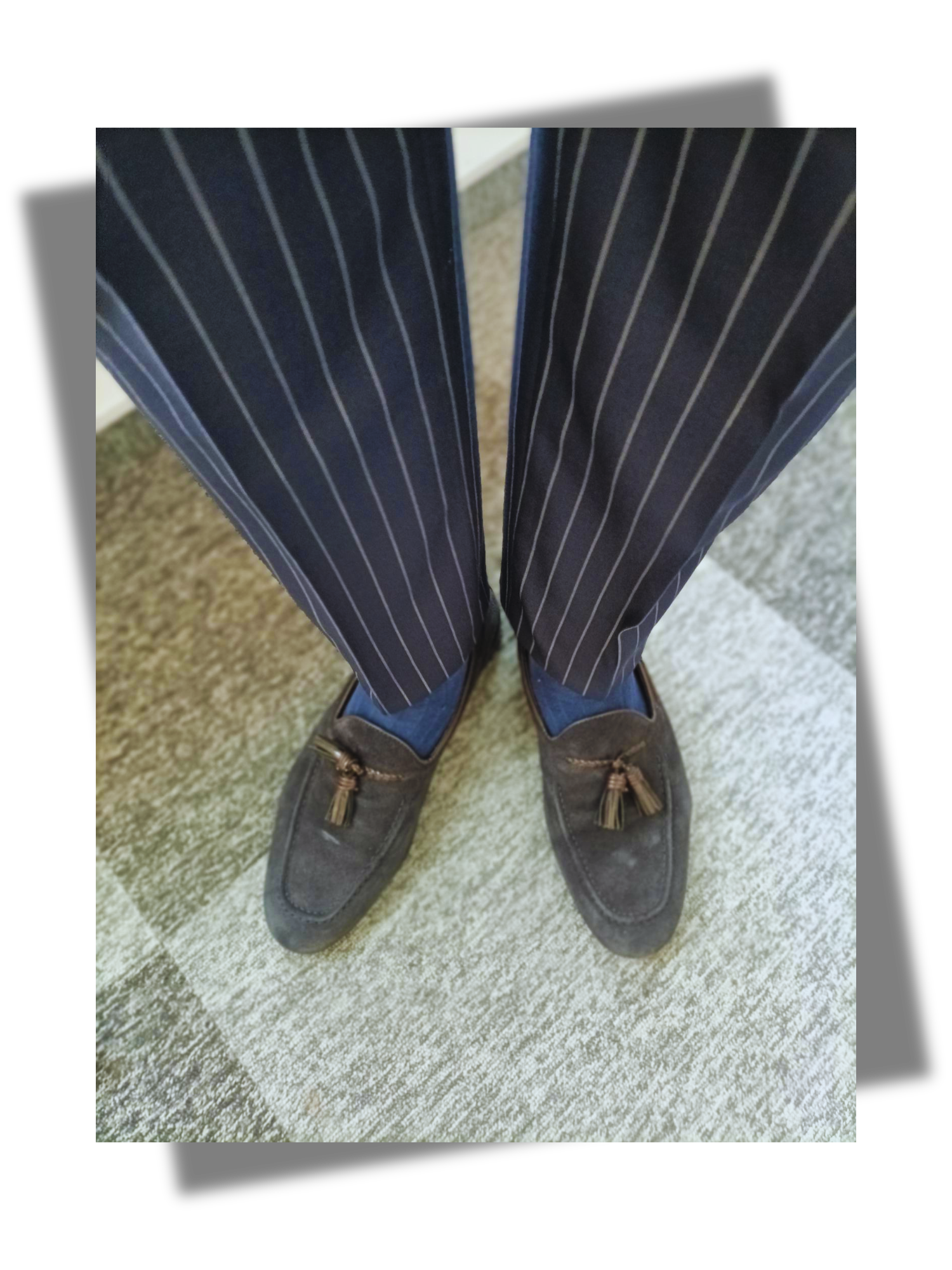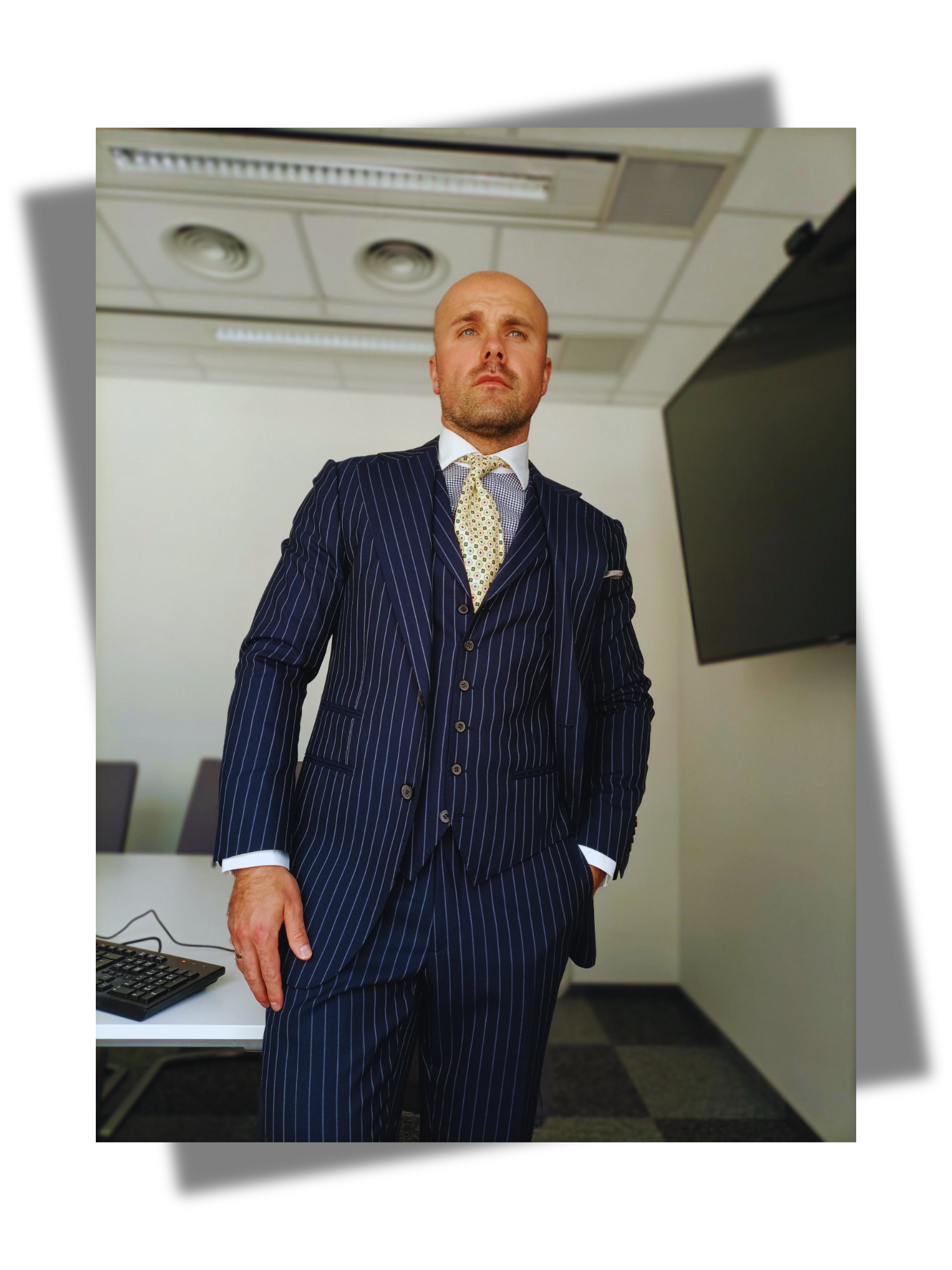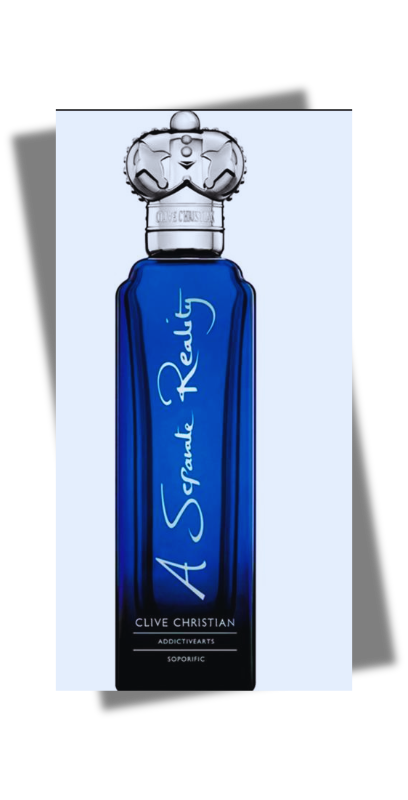Suits as Armor, Scarves as Weapons
The boardroom is a battlefield, and pinstripes are the scars we choose to wear. A suit is armor, yes—but armor alone is heavy, soulless. It’s the pocket square, the fragrance, the tie—the unnecessary, poetic details—that turn survival into theatre. Style doesn’t just protect; it projects.

There are days when you put on a suit and it feels less like clothing and more like armor. The pinstripes aren’t just decoration; they’re battle scars stitched into fabric, vertical reminders that business is still a kind of war. The boardroom has no trenches, but it has its casualties: time, energy, pride, ambition.
Every man who has ever stood under the buzz of fluorescent lights, adjusting a tie before a meeting, knows the truth: we dress not just to impress, but to protect. The lapels become shields, the stiff collar a barricade. The world throws challenges, expectations, judgments—your suit absorbs the impact.
But armor alone isn’t enough. Steel without poetry is just heaviness. That’s why the details matter.
Take the pocket square. To the untrained eye, it’s just a splash of color, but in reality it’s the soft rebellion of silk against steel. Yellow flowers blooming on navy pinstripes are not decoration; they are defiance. A reminder that even in the greyest battlefield, there’s still a man who dares to carry beauty into combat.
The tie tightens at the throat like discipline, but its pattern is a code, a private signature stitched in miniature. The knot isn’t just restraint—it’s a declaration that you still control your narrative.
And then there’s the fragrance—a bottle of Clive Christian in cobalt blue, heavy as royalty, discreet as a dagger. The invisible weapon. You leave a trace of it in the air long after you’re gone, a reminder that your presence is more than flesh and bone. It lingers. It haunts. It marks territory without raising a sword.
The shoes—polished, leather stretched to the contours of your life—ground you, anchor you, remind you that battles aren’t won in the clouds of theory but on the floors you actually stand upon.
When it all comes together—the suit, the square, the tie, the scent—you become more than a man in uniform. You become a contradiction. The soldier who smuggles poetry into the war. The strategist who fights with elegance. The dandy who refuses to let life reduce him to grey.
Because the truth is this: a suit doesn’t just protect you. It projects you. It sends your silhouette ahead of your words, carving space before you even speak.
And the silk, the scent, the small unnecessary details? Those are not frivolous—they are weapons. Not of violence, but of influence. Not of destruction, but of presence.
We live in a world that demands conformity, efficiency, straight lines and sharp corners. But sometimes, the only rebellion left is beauty. To carry color into a room that demands monotone. To wear fragrance into a space that reeks of recycled air. To knot a tie not because you have to, but because you refuse not to.
The modern battlefield is not made of mud and blood. It’s made of emails, deadlines, negotiations, and endless PowerPoint slides. But even here, a man can fight with style.
The suit is armor. The scarf is a weapon. The perfume is the smoke that follows you after battle.
And the greatest victory? To walk out of the war looking like you were never touched by it.
